Enblend versus PTStitcher masks -- quality of region selection
This web page supports PanoTools posting http://groups.yahoo.com/group/PanoTools/message/9497
.
The point of this page is to show that the masks generated by
PTStitcher often have strange shapes, far from optimal.
Here is my original scene as shown by PTGui. It is a 2 x 4 array
of images, shot handheld with a small auto-everything film
camera. I have not cropped the film scan edges here,
so you can see some of the frame boundaries.
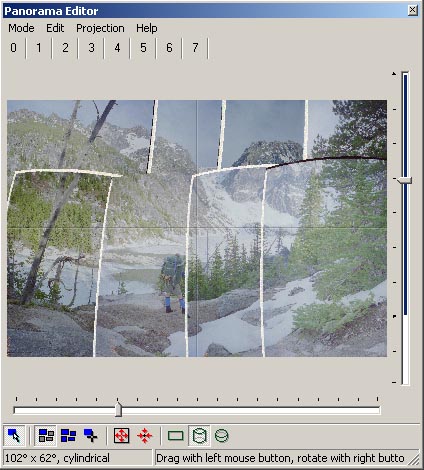
Now for demonstration I replace the original images with color- and
texture-coded images, to make it easier to see the visible regions
computed by PTStitcher and Enblend.
First, the images in the same order as in the original scene.

Here with the order reversed. You can see that the layout is
almost symmetric, top-to-bottom, and that the images are spread out
fairly evenly side-to-side.
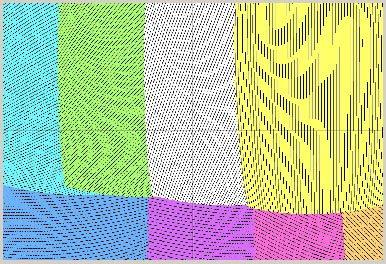
Now for the punchline. I render with PTStitcher and Enblend, and
mark the edges of visible regions with white lines so that you can see
them better.
Here are the visible regions computed by PTStitcher. They have
strange shapes and are very far from optimal. Many of the seams
are near the edge of a source image instead of being in the middle of
the overlap between two images. There are strange 45-degree
bevels near the image edges. I do not know how these shapes are
computed, but they are typical in my experience.
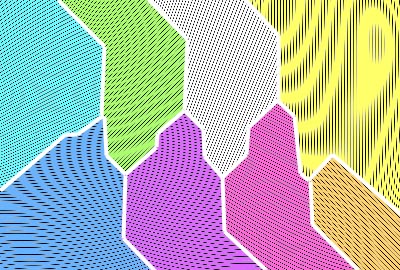
The ones computed by Enblend are much better. The seams are much
closer to the center of overlap regions.
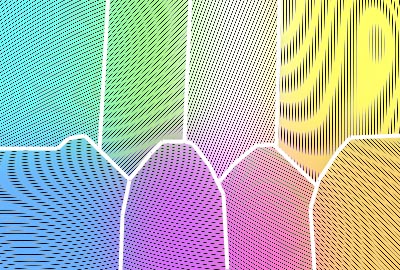
Even the Enblend regions do not seem quite optimal in the sense of
using pixels as far away from
an edge as possible. The boundary is too low (not centered
top-to-bottom) and seems more jagged than it ought to be.
Here are region boundaries drawn by hand using a farthest-from-edge
criterion, on top of a picture with transparent layers.
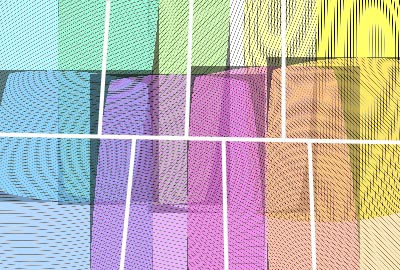
If you want to play with this, here is a .zip file containing the PTGui
project and test images: PTStitcherRegionsDemo.ZIP
For more information, reply to the PanoTools posting or contact me at  .
.
Rik Littlefield
PS. Here is the final image after contrast blending and various
other
touchups. 6100 x 4880 pixels. Looks very nice printed at
305 dpi.
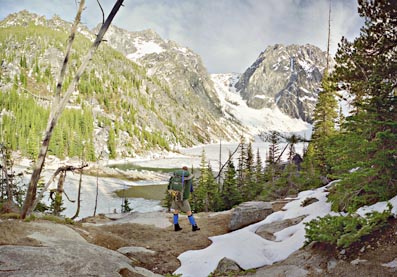






 .
.